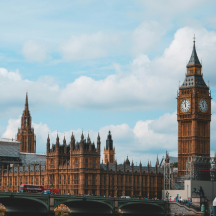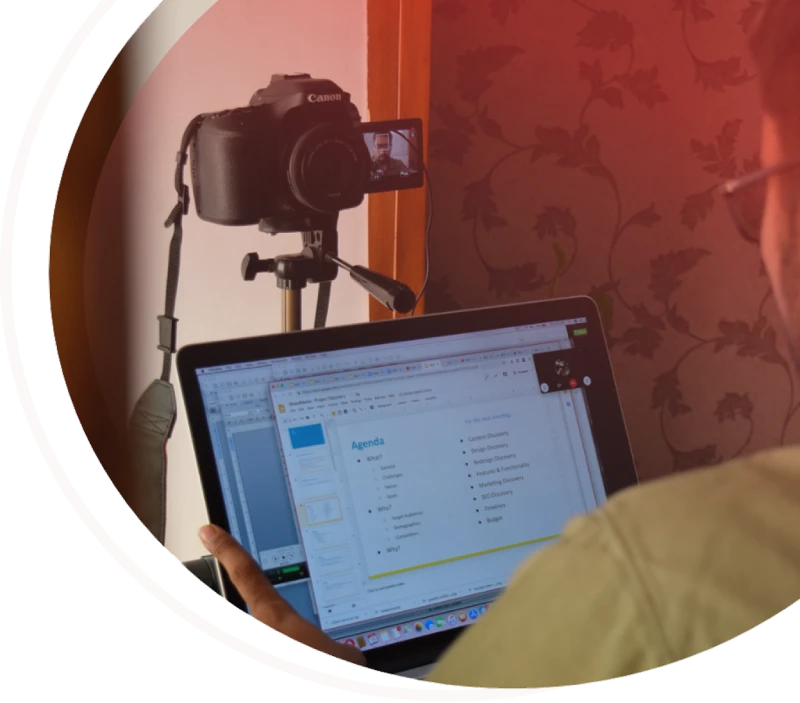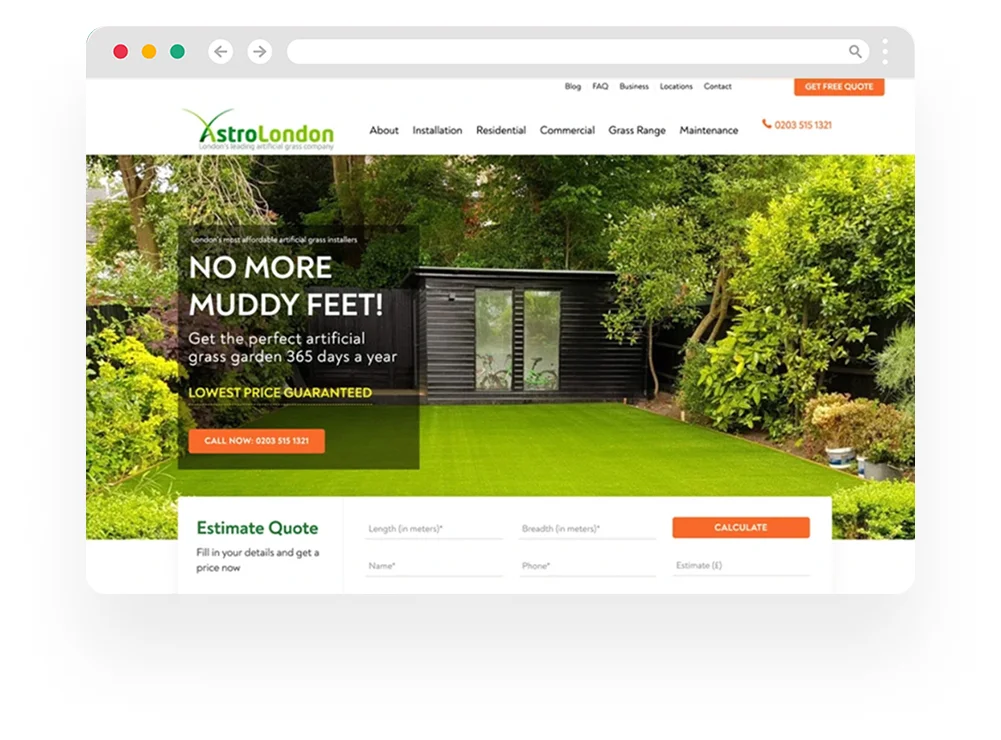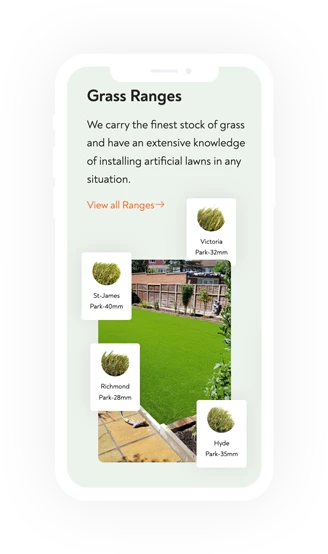Grass Reimagined
Grass Reimagine Case Study


Grass Reimagine Case Study
Market Overview
The UK artificial grass market has seen steady growth, driven by demand in sports, residential, and commercial sectors. In 2024, the market was valued at USD 372.5 million, reflecting its increasing adoption for low-maintenance, water-conserving alternatives to natural grass.
Key Points
- Research suggests the UK artificial grass market was valued at USD 372.5 million in 2024.
- It seems likely that the market size in 2025 is around USD 392.2 million, based on forecasts.
- The evidence leans toward the market reaching USD 516.8 million by 2030, with a 5.7% CAGR from 2025 to 2030.
- An unexpected detail is the growing popularity of polypropylene as a fast-growing material segment.
Table of Contents
Current Market Size
Based on available forecasts, the market size in 2025 is estimated at approximately USD 392.2 million, calculated from projected growth rates. This reflects the market’s expansion, particularly in sports facilities and residential gardens, with polyethylene remaining a dominant material.
Digital Marketing, SEO & PPC
- SEO to boost rankings and capture high-intent, AI-driven traffic
- Performance Marketing to run ROI-focused campaigns that convert
- Content Marketing to drive clicks, earn links, and build authority

Future Projections
Looking ahead, the market is expected to grow to USD 516.8 million by 2030, with a compound annual growth rate (CAGR) of 5.7% from 2025 to 2030. Polypropylene is anticipated to be the fastest-growing material segment, highlighting innovation in durable and cost-effective options.
The UK artificial grass market, encompassing synthetic turf used in gardens, sports fields, and commercial landscaping, has been a subject of growing interest due to its low-maintenance and water-conserving benefits. This report provides a comprehensive analysis, including historical data, current estimates, and future projections, based on extensive research from reputable market analysis firms. The analysis is grounded in data up to April 2025, ensuring relevance for stakeholders and decision-makers.
UK Artificial Grass Market Report: Detailed Analysis

MOBILE SESSION
PROFIT INCREASE
ADWORDS ROI
An Artificial Grass company in London whose website leads dried up because of outdated design.
With a Strategic & Conversion Ready Design, his lead count grew by 32 times and online profit by 20 times.
SEO ROI

Historical Context and Past Data
Historical data for the UK artificial turf market, as reported by Grand View Research – UK Artificial Turf Market Outlook, indicates steady growth from 2018 to 2023. The most recent past data point, from 2024, shows the market was valued at USD 372.5 million. This figure reflects the market’s expansion, driven by increasing adoption in sports facilities, such as football clubs, and residential areas, particularly in regions with high rainfall and limited sunlight. Polyethylene was identified as the largest revenue-generating material in 2024, holding a 62.36% share, underscoring its dominance in the market.
Current Market Situation
As of April 2025, the present market situation is estimated based on forecasts due to the lack of real-time data for the current year. Calculations derived from Grand View Research – UK Artificial Turf Market Outlook suggest that the market size in 2025 is approximately USD 392.2 million. This estimate is based on the projected compound annual growth rate (CAGR) of 5.7% from 2025 to 2030, working backward to find the starting value. The market continues to grow, fueled by demand for low-maintenance solutions, with the UK accounting for 5.4% of the global artificial turf market in 2024, as per the same source. The adoption in sports organizations, schools, and urban landscaping projects highlights its practical appeal, especially in areas with challenging weather conditions.
Future Projections and Forecast
Looking forward, the UK artificial turf market is projected to reach USD 516.8 million by 2030, with a CAGR of 5.7% from 2025 to 2030, according to Grand View Research – UK Artificial Turf Market Outlook. This growth trajectory is supported by increasing investments in sports infrastructure and the rising popularity of eco-friendly, durable materials. An interesting trend is the anticipated fast growth of polypropylene as a material segment, expected to outpace polyethylene due to its cost-effectiveness and durability, offering an unexpected insight into material innovation within the market.
Market Drivers and Trends
Several factors are driving the market’s expansion. The demand for water-conserving and low-maintenance alternatives to natural grass is significant, particularly in sports fields where consistent playing surfaces are crucial. Technological advancements, such as improved fibers that mimic natural grass and incorporate anti-bacterial properties, are enhancing market appeal. Additionally, the shift toward sustainable and recyclable materials aligns with global environmental goals, further propelling growth. The report also notes the impact of urban landscaping projects and residential garden transformations, driven by changing lifestyles and limited time for garden maintenance.
Detailed Data Breakdown
To provide a structured overview, the following table summarizes key data points:
| Year | Market Size (USD Million) | CAGR | Key Material |
|---|---|---|---|
| 2024 | 372.5 | - | Polyethylene (62.36% share) |
| 2025 | ~392.2 | - | - |
| 2030 | 516.8 | 5.7% (2025–2030) | Polypropylene (fastest growing) |
This table encapsulates the historical, current, and forecasted market sizes, highlighting the growth trajectory and material trends.
Comparative Analysis and Regional Context
While the report focuses on the UK, it’s worth noting that Europe, including the UK, accounted for a significant share of the global artificial turf market in 2024, as per Grand View Research – Global Artificial Turf Market Analysis. The UK’s 5.4% share underscores its importance within the region, with Germany projected to lead the European market by 2030. This regional context highlights the UK’s position within a broader market, driven by similar trends such as sports field development and residential landscaping.
Methodological Considerations
The estimates for 2025 were derived by calculating backward from the 2030 forecast using the provided CAGR, ensuring consistency with the reported data. The reliance on Grand View Research – UK Artificial Turf Market Outlook and Grand View Research – Global Artificial Turf Market Analysis reflects the use of reputable sources, though limitations include the lack of real-time data for 2025 and potential variations in growth rates due to economic or environmental factors.
Conclusion
This detailed analysis provides a robust foundation for understanding the UK artificial grass market, offering stakeholders insights into past performance, current estimates, and future potential. The market’s growth, driven by sustainability and convenience, positions it as a key segment within the broader landscaping and sports industries, with polypropylene emerging as a notable material for future development.




